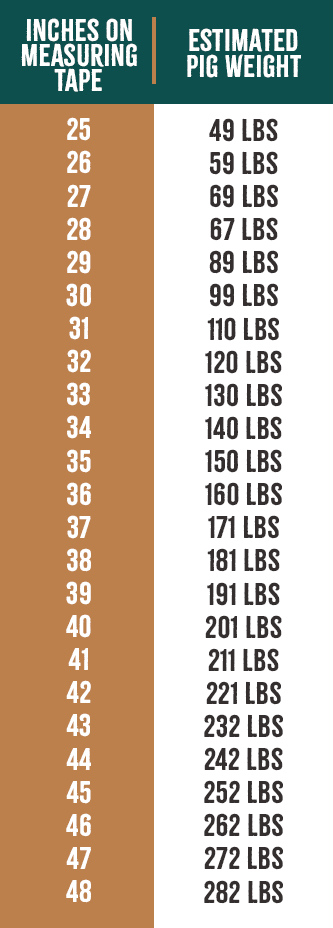
Feeding show pigs. Though it may seem easy for some, to the person who has no experience, we understand it can be daunting. So where to start? With many feed companies, different products, different people with varying opinions we wanted to create a resource for you. Our Feeding Showpigs 101 series sets to start at the bare minimum to teach exhibitors and families the key components when first starting out, taking you through every step of the way.
When sourcing someone to help with this blog series, Showpig was fortunate to tap into the immense talent and knowledge of Dr. Joel DeRouchey, PhD Swine Nutritionist and professor at Kansas State University and co-owner of Primo Feeds. Beyond Dr. DeRouchey’s years of experience, he also understands the “show pig” side of nutrition immensely. DeRouchey and his family have shown across the country for over a decade, competing at every level. Understanding basic swine nutrition, with a hand in the ins and outs of the show pig industry as well, we are thankful to have Dr. DeRouchey as the source for content as we begin this ongoing series.
Starting out on the right foot really has nothing to do with nutrition. It has everything to do with the basics each and every animal needs to survive, and the things you should be doing to set you and your project up for success. In this first 101, we wanted to start with a focus on what YOU need to consider and have in place before even buying your first bag of feed.
1. ENVIRONMENT
In order for show pigs to thrive and be successful on feed, they have to have an environment that facilitates the ability to do that. When first bringing your project home, make sure there is a warm, draft-free pen to receive them in. Evaluate your pen space. Is it clean? Dry? Free from sharp objects or ways for your show pig to injure themselves? Show pigs, even in hot months, NEED a dry place to rest. We suggest providing a large pen, at least 16 square feet per pig, allowing your animal to move around freely.
Depending on your situation, proper shade and ventilation are a must. During cooler times of the year, clean, dry bedding is essential. During warmer times, damper bedding may be taken into consideration in part of the pen to provide a place for pigs to cool off. Straw is NEVER a good option for show pigs in the summer months. Instead, look for wood shavings, pelleted bedding or sand. A good rule of thumb to consider when building a suitable environment is to ask yourself how comfortable you would be, if placed in the same conditions.
2. WATER
Access to clean, fresh water is not only important but VITAL. Your animal’s performance will only be as good as the water that it drinks. We typically think about what to feed, but without proper water and water intake, feed intake will not matter. Water is possibly one of the most overlooked areas when caring for your swine project.
Your project should ALWAYS have access to fresh, COOL water. In the summer months, be aware of large tanks and hoses that have sat in the sun. Warm or hot water can cause a pig to drink less, or stop drinking altogether. Automatic drinkers such as cup waterers are ideal to use as they prevent excess water wastage and keeps the pen drier. If using a water tank, they should be cleaned out frequently, at least once a week.
3. HEALTH
A healthy pig is a thriving pig. A healthy pig is one that will consume feed and water, gain weight and do all the necessary things to make you and it successful. Before considering buying a project or bringing a show pig home, we highly encourage having a pre-established relationship with a veterinarian. Even though we always hope for nothing to go wrong, you do not want to be stuck in the dark when something may happen and you need help. Be prepared to check daily for sickness, especially when first bringing your project home. Coughing, a rough hair coat, limping, inability to stand, being lethargic, NOT wanting to eat, are all signs something is wrong.
If you can’t have medications on hand, be sure you have a veterinarian to purchase from or who can come and administer them. We strongly suggest treating for internal and external parasites/worms once a month.
4. ABILITY TO WEIGH YOUR PROJECT
Feeding just to feed will do you little to no good if you can’t understand what the goal is when feeding your project. The goal should always be to hit a target ending weight. The only way to understand if you are on track to hitting that target is constantly weighing and evaluating your animal. Before buying or bringing a project home, determine if you can purchase a scale or find a location you can go to weigh your pig. The MOST important information you can have is the weight and gain or your pig throughout the project.
When weighing your project, we advise weighing at the same time or close to the same time every day. Whether that is before or after feeding is entirely up to you, just be consistent. Keep a notebook or have a whiteboard where you can keep track of this information. Don’t have access to a scale? Measuring tapes can also be used, even though it is not as accurate, they can get you within 10-15 pounds of actual weight. Measure the distance from the top of the shoulders down and around the chest of the pig, just behind the front legs and back up to the starting point. Do this THREE times, averaging each measure to come up with the most accurate reading. See table below.

5. BUYING FEED
DO. YOUR. RESEARCH. We can’t emphasize this enough. Learn what feeds and feed options are in your area. Consider the costs and weigh out those costs with what your budget looks like. The average amount your pig will grow a day is between 1.5 and 2.0 pounds. The average amount of feed your pig will consume a day is as follows:
- 3 to 4 pounds for pigs 40 to 75 pounds
- 4 to 5 pounds for pigs 75 to 150 pounds
- 6 pounds and higher for pigs above 150 pounds if offered full access to feed
From a nutrition standpoint, the following is generally a good rule of thumb:
- From 50 to 100 lb a 1.20% to 1.30% total lysine diet is generally fed.
- From 100 to 200 lb a 1.0 to 1.1% total lysine diet is generally fed.
- From 200 to market weight diet a 0.80 to 0.90% total lysine is generally sufficient to meet the pigs needs for proper muscle development.
(NOTE: Some heavier muscled pigs should be fed lower then the above averages.)
Depending on the amount of time you have to feed your pigs, they can be hand fed morning and night or placed on a feeder for full access. In an ideal situation, we could place show pigs on full feed from the time of purchasing until show day. But here is the reality, this situation rarely occurs to maximize your pig’s appearance, and an alteration in daily feed intake by the pig is often a necessity to maximize appearance of your pig. While you can typically bring your project home and allow them to freely eat feed for a period of time during the growing stage, there will likely come a time when hand feeding will become necessary. Plan accordingly.
Hand Feeding. Nutrition requirements. Gaining weight. Losing weight. And MORE. Get ready for an ongoing series that covers everything a showman will need to know when it comes down to the 101 on Showpig Nutrition.





















